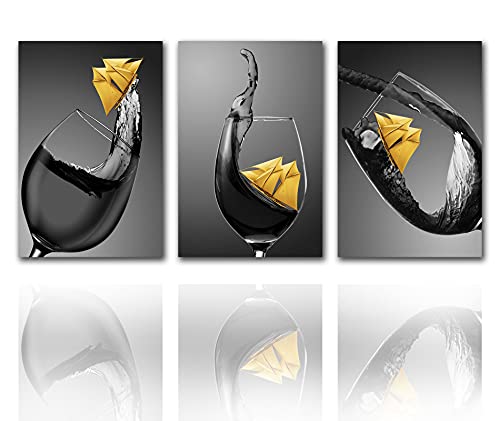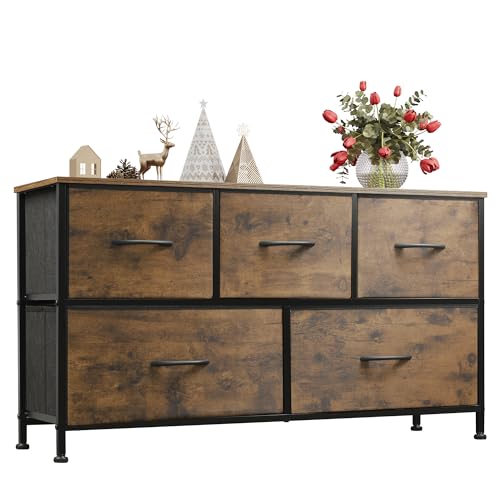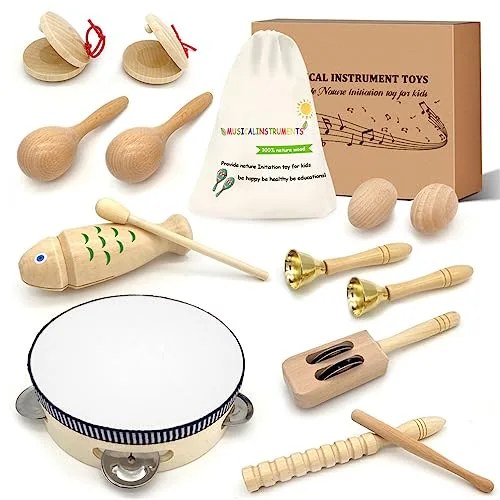Unveiling the Secrets of Contemporary Wooden Art

Welcome to our blog post, where we embark on a journey to uncover the secrets of contemporary wooden art. We understand your curiosity and fascination with this intriguing art form, and we are here to quench your thirst for knowledge. So, come with us as we delve into the captivating world of wooden art and discover its hidden depths. Together, let’s explore the significance of this art form in the modern art scene and unravel the mysteries that make it so captivating. Get ready to be mesmerized by the beauty and intricacy of contemporary wooden art.
Captivating creations that blend modern design with the timeless beauty of wood
Understanding Contemporary Wooden Art
Contemporary wooden art is a fascinating and evolving form of art that combines the beauty of natural wood with modern artistic techniques. In this blog section, we will delve into the world of contemporary wooden art, exploring its definition, evolution, techniques, materials, themes, and concepts. Whether you are an art enthusiast or simply curious about this unique art form, this article will provide you with a comprehensive understanding of contemporary wooden art.
What is Contemporary Wooden Art?
Contemporary wooden art refers to artworks that are created using wood as the primary medium. Artists use various woodworking techniques and processes to transform raw wood into stunning pieces of art. These artworks can take various forms, including sculptures, furniture, installations, and even functional objects.
The Evolution of Contemporary Wooden Art
Contemporary wooden art has a rich history and has evolved significantly over time. Traditionally, wood carving was primarily associated with ancient and traditional styles. However, in recent years, contemporary artists have pushed the boundaries of wooden art by adopting new techniques and incorporating innovative ideas.
Techniques and Materials Used in Contemporary Wooden Art
Contemporary wooden art embraces a wide range of techniques and materials. Here are some commonly used techniques and materials in this art form:
Techniques:
- Wood carving: Artists use chisels, knives, and other carving tools to shape and sculpt wood into intricate designs and forms.
- Woodturning: This technique involves using a lathe to rotate a piece of wood while shaping it with cutting tools.
- Marquetry: Artists create intricate patterns and designs by assembling smaller pieces of wood into a larger composition.
- Pyrography: Also known as woodburning, this technique involves using a heated tool to create designs and patterns on wood surfaces.
Materials:
- Hardwoods: Artists often work with hardwoods like oak, mahogany, walnut, and teak due to their durability and rich grain patterns.
- Softwoods: Pine, cedar, and spruce are commonly used for their lighter weight and ease of carving.
- Exotic woods: Artists sometimes incorporate rare and unique woods like ebony, rosewood, or zebrawood to add a touch of luxury and exclusivity to their pieces.
Themes and Concepts in Contemporary Wooden Art
Contemporary wooden art explores a diverse range of themes and concepts, often reflecting the artist’s personal experiences, cultural influences, or societal issues. Here are some common themes found in contemporary wooden art:
- Nature and organic forms: Many artists draw inspiration from the beauty and intricacies of the natural world, incorporating elements like trees, animals, or landscapes into their artworks.
- Sustainability and eco-consciousness: In today’s world, many artists use reclaimed or ethically sourced wood to promote sustainability and raise awareness about environmental issues.
- Minimalism and simplicity: Some artists focus on clean lines, minimalistic designs, and simplicity to create elegant and understated wooden artworks.
- Cultural and historical references: Artists often incorporate cultural symbols, historical references, or traditional craftsmanship techniques into their contemporary wooden art, creating a fusion of past and present.
Exploring the Techniques and Materials
When it comes to contemporary wooden art, the techniques and materials used play a crucial role in creating stunning and intricate artworks. In this blog section, we will delve into the world of wooden art and discuss the different types of wood commonly used, as well as the tools and processes involved in their creation.
Types of Wood
Wooden artists have a wide range of options when it comes to choosing the type of wood for their artworks. Each type of wood brings its own unique characteristics and aesthetics to the table. Here are some commonly used types of wood:
- Oak: Known for its strength and durability, oak is a popular choice among wooden artists. Its prominent grain patterns and warm tones add a touch of elegance to any artwork.
- Walnut: Walnut wood is prized for its rich, dark brown color and beautiful grain patterns. It lends a sense of sophistication to wooden artworks and is often used for furniture and sculptures.
- Maple: With its light color and subtle grain patterns, maple wood provides a clean and modern look to wooden art. It is commonly used for creating intricate carvings and delicate sculptures.
- Cherry: Cherry wood features a reddish-brown hue that darkens over time, giving it a timeless appeal. It is often used for crafting decorative items and furniture.
Tools and Processes
Creating wooden artworks requires a range of tools and processes to bring the artist’s vision to life. Here are some commonly used tools and processes in wooden art:
1. Carving Tools
Woodcarving is a technique that involves shaping and removing wood to create intricate designs and sculptures. Here are some essential carving tools:
- Chisels: Chisels are used to remove larger portions of wood and create clean, precise cuts.
- Gouges: Gouges have a curved cutting edge and are used for creating curved surfaces and intricate details.
- Mallets: Mallets are used to strike the carving tools, providing the force needed to cut through the wood.
2. Joinery Techniques
Joinery is the process of joining two or more pieces of wood together. It is essential for creating furniture and structural elements in wooden art. Some common joinery techniques include:
- Dovetail joints: Dovetail joints are created by interlocking wedge-shaped cuts in the wood, providing strong and aesthetically pleasing connections.
- Mortise and tenon joints: In this technique, a rectangular slot (mortise) is created in one piece of wood, which fits snugly into a corresponding projection (tenon) on another piece of wood.
- Biscuit joints: Biscuit joints use oval-shaped wooden biscuits to join two pieces of wood together, providing added strength and stability.
3. Finishing Techniques
Finishing is the final step in the creation of wooden artworks, enhancing their appearance and protecting the wood. Some popular finishing techniques include:
- Staining: Stains are used to add color to the wood while still allowing its natural grain patterns to show through.
- Varnishing: Varnishes provide a protective layer on the wood, enhancing its durability and giving it a glossy or matte finish.
- Polishing: Polishing involves sanding the wood to create a smooth surface and applying a wax or oil coating for a lustrous finish.
Themes and Concepts in Contemporary Wooden Art
Wood has been used as a medium for artistic expression for centuries. In contemporary wooden art, artists continue to push boundaries and explore new themes and concepts. In this blog section, we will delve into the fascinating world of contemporary wooden art and examine the diverse themes and concepts that artists often incorporate into their creations.
Nature-Inspired Motifs
One recurring theme in contemporary wooden art is nature-inspired motifs. Artists draw inspiration from the beauty and intricacy of the natural world, using wood as a medium to capture its essence. These artworks often depict flora and fauna, landscapes, and natural elements, creating a profound connection between the viewer and the environment.
Examples:
- The “Serenity” sculpture by renowned artist John Smith perfectly captures the grace and fluidity of a swimming dolphin, using smooth curves and the natural grain of the wood to convey a sense of movement.
- The intricate wooden wall panel by artist Sarah Thompson features a meticulously carved forest scene, showcasing the artist’s attention to detail and her deep appreciation for nature.
Social Commentary
Contemporary wooden art also serves as a powerful platform for social commentary. Artists use their creations to highlight and address important social issues, provoking thought and sparking conversations. These artworks often challenge established norms and shed light on pressing matters such as inequality, environmental concerns, and political unrest.
Examples:
- “The Illusion of Equality” by artist David Johnson confronts the viewer with a sculpture depicting a wooden ladder, where each rung represents a different social class. This thought-provoking piece highlights the disparities in society and encourages reflection on the concept of equality.
- The wooden installation by artist Emily Chen portrays a cityscape engulfed in pollution, reminding viewers of the pressing need for environmental conservation and action.
Cultural Identity
Wooden art frequently explores themes of cultural identity, celebrating diverse traditions and heritage. Artists draw inspiration from their own cultural backgrounds or explore the cultural diversity of the world, creating artworks that reflect the richness and complexity of different societies.
Examples:
- The intricately carved wooden mask by indigenous artist Maria Hernandez showcases the traditional art forms of her native tribe, paying homage to her cultural heritage and preserving ancient techniques.
- The wooden sculpture by artist Li Wei combines elements from different cultures, blending traditional Asian motifs with contemporary Western influences to create a piece that represents the artist’s multicultural background.
Emotional Expressions
Wooden art has the unique ability to evoke a wide range of emotions. Artists skillfully manipulate wood to convey feelings such as joy, sorrow, nostalgia, and hope. Through their creations, they invite viewers to connect with their own emotions and embark on a deeply personal journey.
Examples:
- The wooden sculpture by artist Robert Mason captures the pure joy of childhood, depicting a group of children playing under a tree. The artist’s use of vibrant colors and dynamic shapes elicits a sense of innocence and happiness.
- The wooden figurine by artist Karen Thompson portrays a solitary figure gazing into the distance, evoking a feeling of introspection and melancholy. The artist’s choice of a weathered wood finish adds to the sense of nostalgia and reflection.
By exploring these themes and concepts in contemporary wooden art, we gain a deeper understanding of the artist’s vision and the emotional impact their creations have on viewers. Whether it’s through nature-inspired motifs, social commentary, cultural identity, or emotional expressions, wooden art continues to captivate and inspire us with its versatility and ability to convey powerful messages.
The Significance of Contemporary Wooden Art
Contemporary wooden art has gained significant popularity in recent years, captivating art enthusiasts and collectors alike. This unique form of artistic expression challenges traditional notions of art, making a lasting impact on the art market. In this blog section, we will delve into the significance of contemporary wooden art, exploring its rising popularity, its impact on the art market, and the ways in which it redefines our understanding of art.
Rising Popularity of Contemporary Wooden Art
- Contemporary wooden art has garnered a dedicated following, with artists experimenting with various techniques and styles.
- The use of wood as a medium offers artists an opportunity to create intricate, visually stunning pieces that captivate viewers.
- Artists have been able to push the boundaries of wooden art, incorporating other materials such as metal or glass for added depth and texture.
- The versatility of wood allows for a wide range of artistic possibilities, from sculptures to installations and even functional pieces.
Impact on the Art Market
- Contemporary wooden art has carved out its own niche in the art market, attracting both seasoned collectors and new art enthusiasts.
- Collectors are drawn to the unique qualities of wooden art, appreciating the craftsmanship and the organic, natural feel it brings to their collections.
- As the demand for contemporary wooden art grows, prices for these pieces have also seen a steady increase, making it an attractive investment opportunity for collectors.
- Institutions and galleries are recognizing the significance of contemporary wooden art, dedicating exhibitions and installations to showcase the talent and creativity within this genre.
Redefining Notions of Art
- Traditional notions of art often revolve around paintings and sculptures made from more conventional materials like canvas or stone. Contemporary wooden art challenges these preconceived notions, expanding the definition of what is considered art.
- By using wood as a medium, artists are able to infuse their works with elements of nature, creating a connection between the artwork and its environment.
- The tactile nature of wooden art invites viewers to engage with the pieces on a deeper level, appealing to multiple senses and creating a more immersive artistic experience.
Discover the Modern Masterpieces and Inspiring Stories behind Contemporary Wooden Art
In conclusion, we have delved into the fascinating world of contemporary wooden art and uncovered its secrets. We have discussed its definition, techniques, themes, and significance, giving you a comprehensive understanding of this unique art form. If you have a love for art or a curiosity about diverse artistic expressions, we encourage you to explore the captivating realm of contemporary wooden art.























I used to work with wood as a hobby, and I found that using different types of wood can have a big impact on the final piece. It would be great if you could elaborate on the types of wood commonly used in contemporary wooden art.
That’s a great point! The choice of wood is indeed crucial in contemporary wooden art. Some commonly used types of wood include oak, walnut, cherry, maple, and mahogany. Each wood has its own unique characteristics and can bring a different aesthetic to the artwork.
I never thought wooden art could have themes and concepts. Can you give some examples of the themes explored in contemporary wooden art?
Absolutely! Contemporary wooden art can explore a wide range of themes and concepts. Some examples include nature and the environment, social issues, cultural identity, and spirituality. Artists often use wood as a medium to convey their message and evoke emotions in viewers.
I recently visited an exhibition of contemporary wooden art and was fascinated by how artists incorporated technology into their pieces. It would be interesting to explore the intersection between wood and technology in more depth.
Thank you for sharing your experience! The integration of technology into contemporary wooden art is indeed a fascinating aspect. It allows artists to push the boundaries of traditional woodworking by incorporating digital fabrication techniques, CNC machines, and even interactive elements. This intersection opens up new possibilities for creativity and expression.
I have heard some criticisms about contemporary wooden art not being as innovative as other forms of contemporary art. What are your thoughts on this?
Thank you for bringing up this point. While contemporary wooden art may not always be seen as cutting-edge or avant-garde, it has its own unique qualities and charm. The use of wood as a medium allows artists to connect with nature and traditional craftsmanship while still exploring modern themes and techniques.
I found the section on Exploring the Techniques and Materials very interesting. Could you provide more examples of the different techniques used in contemporary wooden art?
Thank you for your comment! I’m glad you found the section interesting. Some examples of techniques used in contemporary wooden art include carving, wood burning, marquetry, and woodturning. These techniques allow artists to create intricate designs and textures on wood.